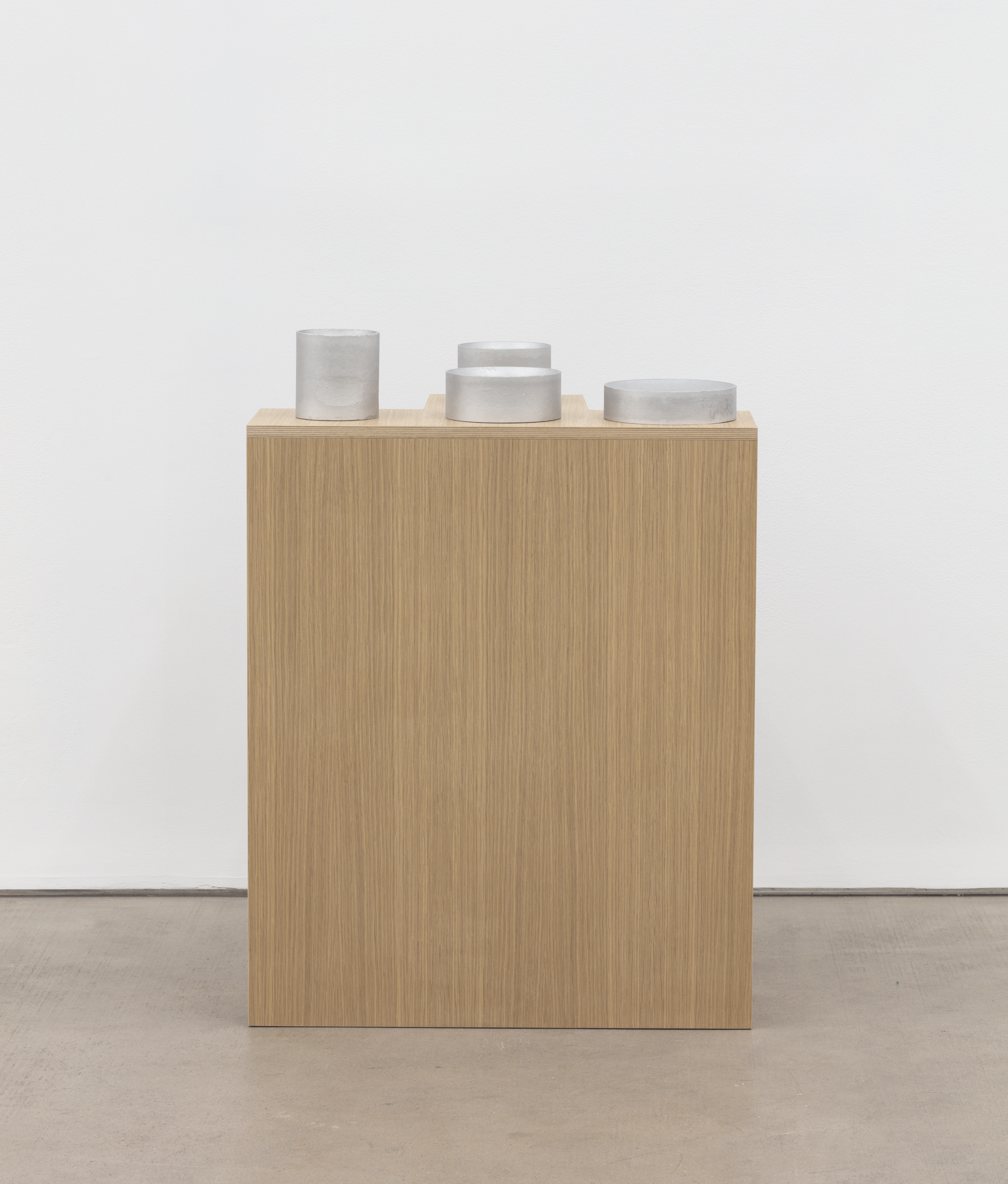




























CLEARING is pleased to present THE WEATHER, an exhibition of new work by ZAK KITNICK.
The viewer is introduced to the show by way of A Year In Review, a neon sculpture containing the footprint of all the forms in the exhibition. Functioning as a legend, a review, and a preview all at once, it is a direct visualization of what’s to come. The presentation is pared down, measured, fit(s). There is an assertion that what you see is what you get, an exhibition containing two main bodies of work, an exhibition composed of aluminum, wood, and glass. The first is a series of wall-based sculptures composed of aluminum boxes with cyclical neon shapes. The second is a series of free-standing sculptures made of geometric wood forms with aluminum cylinders. In the last gallery, a third series based on numbers, colors and shapes of a found calendar scrambles the year.
The longest wall in the gallery holds five neon sculptures. Each form is a year, each color a season, each season broken into three months. Kitnick states, “I wanted to take neon, the material of letters and language, of signage and selling, and use it to think about things like time and temperature.” The glow of the light reflects against the gridded surface of the aluminum frame. Despite their precision, there is an element of incident within the works. Each object contains the wear and tear of its own production. Kitnick confronts cycles, and labors to complete them.
In a parallel line in front of each neon work, a series of equivalent aluminum vessels rest on top of equivalent wood forms. Each work in this series is titled Winter, Spring, Summer, Fall, Cellphone, Keys, Wallet, Watch followed by a word denoting its shape. More than equivalent volumes, weights, and masses, they present equivalents in time. Each sculpture is a year, composed of four seasons, each season a place to set down your things. Representing a personal proclivity for organization, the sculptures also suggest possible usages for each form.
In the final room, shapes and colors from a found calendar represent the nine months of the academic calendar with Kitnick adding three shapes to round out the year. Maintaining a preference for seriality, variation, and repetition, Kitnick produced multiple works on this theme.
Exploring intersections, Kitnick searches for overlap within binaries: art/decor, unique/mass produced, and so on. Kitnick states, “There are some parts of life that are very complicated, and other parts that are very simple. I try to simplify the complicated parts and complicate the simple ones.” He likewise demotes the valuable, and promotes the banal. Once meaning is established, Kitnick knocks it down a peg.
A year means what to who?
– Reilly Davidson